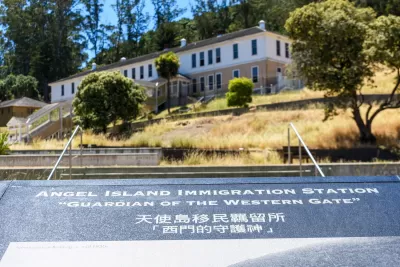How the America’s Most Endangered Places list helps bring important stories out of obscurity.

In a piece for Smithsonian Magazine, Shoshi Parks outlines how the National Trust for Historic Preservation’s America’s Most Endangered Historic Places program has helped activists restore neglected historical sites.
The program adds 11 new endangered sites to the list each year. The recognition can be crucial for sites, helping to raise their profile and access funding for restoration and programming. According to Jennifer Sandy, the senior director of preservation programs for the National Trust, “While designation on the 11 Most Endangered list does not come with dedicated funding, the high-profile nature of the designation does often help organizations attract new sources of funding through grants or philanthropy.”
Remembering and making connections to historical sites, especially those once rarely considered worthwhile by preservationists, lays a foundation for a future built on belonging and inclusion.
As Parks explains, “In its first years, the endangered list was dominated by sites that placed Euro-American history above those of Indigenous, ethnic and immigrant stories. More recently, the National Trust has taken an expanded perspective that tells the full American story, including places previously left at the margins or located outside the contiguous United States.”
FULL STORY: These Historic Sites in the U.S. Were Once Endangered. Now They’re Thriving

Planetizen Federal Action Tracker
A weekly monitor of how Trump’s orders and actions are impacting planners and planning in America.

Maui's Vacation Rental Debate Turns Ugly
Verbal attacks, misinformation campaigns and fistfights plague a high-stakes debate to convert thousands of vacation rentals into long-term housing.

Restaurant Patios Were a Pandemic Win — Why Were They so Hard to Keep?
Social distancing requirements and changes in travel patterns prompted cities to pilot new uses for street and sidewalk space. Then it got complicated.

In California Battle of Housing vs. Environment, Housing Just Won
A new state law significantly limits the power of CEQA, an environmental review law that served as a powerful tool for blocking new development.

Boulder Eliminates Parking Minimums Citywide
Officials estimate the cost of building a single underground parking space at up to $100,000.

Orange County, Florida Adopts Largest US “Sprawl Repair” Code
The ‘Orange Code’ seeks to rectify decades of sprawl-inducing, car-oriented development.
Urban Design for Planners 1: Software Tools
This six-course series explores essential urban design concepts using open source software and equips planners with the tools they need to participate fully in the urban design process.
Planning for Universal Design
Learn the tools for implementing Universal Design in planning regulations.
Heyer Gruel & Associates PA
JM Goldson LLC
Custer County Colorado
City of Camden Redevelopment Agency
City of Astoria
Transportation Research & Education Center (TREC) at Portland State University
Jefferson Parish Government
Camden Redevelopment Agency
City of Claremont



























